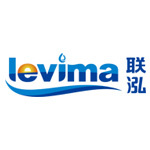Legend Holdings(03396)
Search documents
联想控股(03396):联泓新科(003022.SZ)前三季度归母净利润2.32亿元,增长30.32%

智通财经网· 2025-10-14 23:45
Core Viewpoint - Lenovo Holdings' subsidiary, Lenovo Huong New Materials Technology Co., Ltd., reported a decline in revenue for the first three quarters, while net profit showed significant growth [1] Financial Performance - Revenue for the first three quarters was 4.568 billion yuan, a year-on-year decrease of 8.02% [1] - Net profit attributable to shareholders of the listed company was 232 million yuan, an increase of 30.32% year-on-year [1] - Net profit attributable to shareholders after deducting non-recurring gains and losses was 233 million yuan, reflecting a year-on-year growth of 55.14% [1] - Basic earnings per share were 0.17 yuan [1]
联想控股(03396.HK):联泓新科第三季度净利润7173.9万元 同比增长90.9%

Ge Long Hui· 2025-10-14 23:45
Core Viewpoint - Lenovo Holdings (03396.HK) announced that its subsidiary, Lianhong Xinke (003022.SZ), achieved a revenue of 1.657 billion RMB in Q3 2025, reflecting a year-on-year growth of 0.21% [1] Financial Performance - Lianhong Xinke reported a net profit attributable to shareholders of 71.739 million RMB, which represents a significant year-on-year increase of 90.90% [1] - The net profit attributable to shareholders after deducting non-recurring gains and losses was 72.7239 million RMB, showing a year-on-year growth of 89.92% [1] - Basic earnings per share stood at 0.05 RMB [1]
联想控股(03396) - 关於本公司附属公司联泓新材料科技股份有限公司2025年第三季度报告公佈
2025-10-14 23:34
香港交易及結算所有限公司及香港聯合交易所有限公司對本公告的內容概不負責,對其 準確性或完整性亦不發表任何聲明,並明確表示,概不就因本公告全部或任何部分內容 而產生或因倚賴該等內容而引致之任何損失承擔任何責任。 聯想控股股份有限公司 Legend Holdings Corporation (於中華人民共和國註冊成立的股份有限公司) (股份代號:03396) 關於本公司附屬公司聯泓新材料科技股份有限公司 2025年第三季度報告公佈 本公司附屬公司聯泓新材料科技股份有限公司(股票代碼:003022)於2025年10月15日 在深圳證券交易所(www.szse.cn)及巨潮資訊網(www.cninfo.com.cn)公佈其2025年第三 季度報告。 本公司股東及投資者在買賣本公司證券時務請審慎行事。 本公告乃由聯想控股股份有限公司(「本公司」)根據香港聯合交易所有限公司證券上市規 則第13.09(2)(a)條及香港法例第571章證券及期貨條例第XIVA部之內幕消息條文而作出。 | | 截至2025年 | | 截至2025年 | | | --- | --- | --- | --- | --- | | | 9月30日 | ...
第一批参会企业名单!2026硅基负极与固态电池高峰论坛
鑫椤锂电· 2025-10-13 03:02
Core Viewpoint - The article discusses the upcoming 2026 Silicon-based Anode and Solid-State Battery Summit, focusing on breakthroughs in silicon-based anodes and the future of solid-state batteries [2][3]. Event Details - The summit is organized by Xinluo Information and will take place in Shanghai, China, on November 12-13, 2025, with a registration day on November 12 [3][4]. - The event includes a visit to Shanghai Shanshan Enterprises and a welcome dinner, which are exclusive to registered participants [4]. Agenda and Topics - The conference will cover various topics related to silicon-based anodes and solid-state batteries, including: - Development bottlenecks and solutions for new silicon-based anode products [6]. - High-efficiency long-cycle silicon-based anode development [6]. - Market outlook for silicon-based anodes in digital and cylindrical battery applications [6]. - Current status and development trends of the solid-state battery market [6]. - Notable speakers include representatives from Carbon One New Energy Group, Shanghai Shanshan Technology, and the Chinese Academy of Sciences [6]. Participating Companies - A diverse range of companies will participate, including: - Penghui Energy - Ningde Times - TianNeng Battery Group - Various financial and investment firms [8][10][11]. Previous Events - The article references past conferences, indicating a history of discussions and developments in the silicon-based anode and solid-state battery sectors [14].
拉卡拉获批减少注册资本1100万余元
Bei Jing Shang Bao· 2025-10-12 03:45
Group 1 - The People's Bank of China has updated the major event change permission information for non-bank payment institutions, approving the reduction of Lakala Payment Co., Ltd.'s registered capital from 788,082,500.00 yuan to 776,664,942.00 yuan [1] - The major shareholder, Legend Holdings Corporation, increased its shareholding ratio from 23.54% to 23.88% [1]
联想控股(03396) - 截至二零二五年九月三十日止之股份发行人的证券变动月报表
2025-10-03 01:07
FF301 致:香港交易及結算所有限公司 公司名稱: 聯想控股股份有限公司 股份發行人及根據《上市規則》第十九B章上市的香港預託證券發行人的證券變動月報表 截至月份: 2025年9月30日 狀態: 新提交 呈交日期: 2025年10月3日 I. 法定/註冊股本變動 | 1. 股份分類 | 普通股 | 股份類別 | H | | 於香港聯交所上市 (註1) | | 是 | | | --- | --- | --- | --- | --- | --- | --- | --- | --- | | 證券代號 (如上市) | 03396 | 說明 | | | | | | | | | | 法定/註冊股份數目 | | | 面值 | | 法定/註冊股本 | | | 上月底結存 | | | 1,271,853,990 | RMB | | 1 RMB | | 1,271,853,990 | | 增加 / 減少 (-) | | | | | | RMB | | | | 本月底結存 | | | 1,271,853,990 | RMB | | 1 RMB | | 1,271,853,990 | | 2. 股份分類 | 普通股 | 股份類別 ...
联想控股相关公司新增一项180.00万元的招标项目
Xin Lang Cai Jing· 2025-09-23 12:58
快查股权穿透数据显示,该公司由联想控股持股,出资比例为11.29%。 来源:市场资讯 (来源:快查一企业中标了) 快查APP显示,联想控股相关公司东方航空物流股份有限公司于2025年9月23日发布一则招标信息,项 目名称为供应链公司重型牵引车及减震半挂车维修项目,预算金额为180.00万元。 ...
拉卡拉股东联想控股累计减持807.81万股

Zhi Tong Cai Jing· 2025-09-23 11:43
Group 1 - The core point of the article is that Lenovo Holdings has reduced its stake in Lakala by selling a total of 8.0781 million shares through centralized bidding and block trading from August 19, 2025, to September 22, 2025 [1]
拉卡拉:联想控股持股比例已降至23.97%

2 1 Shi Ji Jing Ji Bao Dao· 2025-09-23 11:12
Core Viewpoint - Lenovo Holdings has reduced its stake in Lakala by selling 8.0781 million shares, representing 1.03% of the total share capital, which does not affect the company's governance structure or control [1] Summary by Relevant Sections - **Shareholding Changes** - Lenovo Holdings' shareholding decreased from 25.00% to 23.97% following the sale of shares [1] - **Impact on Company Governance** - The reduction in shareholding does not alter the company's governance structure or its ongoing operations [1] - Lenovo Holdings is not a controlling shareholder or actual controller of the company, ensuring that control remains unchanged [1]
21对话|联想控股于浩:“人工智能+”带来万亿市场空间
2 1 Shi Ji Jing Ji Bao Dao· 2025-09-22 12:15
Core Insights - The State Council has issued the "Opinions on Deepening the Implementation of 'Artificial Intelligence +'" which accelerates the development of China's AI industry [2] - The document outlines a mid-to-long term plan for AI development with quantitative indicators, focusing on six key areas: technology, industry, consumption, livelihood, governance, and global cooperation [2] - The "Artificial Intelligence +" initiative is expected to shift AI from singular technological breakthroughs to empowering the entire industry chain, creating growth opportunities for upstream computing and data companies, as well as collaborative opportunities for midstream model development and downstream application scenarios [2] Industry Implications - The initiative aims to foster a new intelligent economy characterized by human-machine collaboration and cross-industry integration [2] - According to Yu Hao, Vice President of Lenovo Holdings, the "Artificial Intelligence +" initiative provides clear direction for the industry, facilitating comprehensive connectivity in both infrastructure and industry applications [3] - The key difference between "Artificial Intelligence +" and the previous "Internet +" is the shift from "linking" to "restructuring," leading to a qualitative leap in "human efficiency" [3] Future Outlook - Long-term, AI is expected not to eliminate jobs but to create new roles such as AI annotators, allowing humans to escape repetitive tasks and pursue higher value creation [3]


